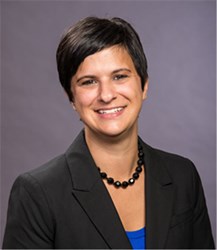Cell Thawing: Are You Risking GMP Compliance With The Water Bath Method?
By Trisha Gladd, Editor, Life Science Connect

As we move into 2015, cell therapy as a viable and profitable market is becoming more of a reality, especially with the increased focus on unmet medical needs offering the potential for small companies to find their niche in the industry. However, one of the challenges with working with cells, at both the research and clinical level, is the issue of variability that can occur during the thawing of cryopreserved cells.
The most common thawing method today is the use of a water bath; however, this method can lead to issues with viability, contamination, and inconsistent results. Because of the sensitivity of the cell samples, it is nearly impossible to completely eliminate variability; however, with standardized handling practices, it can be lowered enough that it will not have an impact on the efficacy of a cell-based therapy.
The Risks Of The Water Bath
Dr. Karim Lee has been working in the Transplantation Research Lab at the University of California, San Francisco since 2008 studying the application of regulatory T cells in order to establish long-term acceptance of transplanted organs. “Conventionally, we have used the water bath-based thawing protocol,” says Lee. “But we have two problems: first, the recovery and cell viability after thawing are quite variable; second, we don’t want to spend too much time for constant monitoring of a water bath to achieve temperature consistency and sterility due to FDA regulations. Because all of our cell therapy products have to be manufactured in a clinical facility, which is a GMP facility, all the instruments and all the reagents have to be documented and closely monitored.”
Dr. Lee says it is her and her team’s goal to have a very consistent thawing system that eliminates any contamination issues. To achieve this, they decided to test a new automated thawing system, ThawSTAR™, created by BioCision, a life science research company that develops products and solutions for process standardization. Through the application of thermal regulation principles and technologies, BioCision engineered the ThawSTAR™ automated thawing system to address the emerging need to standardize cell thawing. Dr. Lee says the ability to properly and consistently thaw cryopreserved cells is critical to product development. Not only does the automated thawing system offer consistency, but she says it’s also a time saver. “The ThawSTAR system cuts out the extra monitoring required for a water bath, and we no longer have to be concerned with contamination,” she says. “That also eliminates the risk of losing samples.”
In addition, it is not uncommon in tissue culture labs for water baths to be used as a community resource. The potential for contamination is heightened with communal water baths due to insufficient cleaning, and the bath temperature may be changed for special applications, resulting in the potential for the bath not being set back to the expected temperature. The added risk to the sample of overwarming due to human error also can result in serious consequences to the cost and outcomes of the research.
Achieve Potential Standardization By Removing Variability
Eric Kunkel, Ph.D., senior vice president of BioCision Research & Development, says the ThawSTAR™ system is designed to mimic the profile achieved in thawing vials within a water bath but without the risks of contamination or overwarming. Kunkel says this is done "by efficient coupling of the heating units to the tubes with a pliable, inert material that bridges any small gaps and provides very good thermal contact.” He continues, “It’s basically a combination of solving some of the mechanics of heating a vial with a solid state unit, which up to this point, hasn’t been achieved, and using software and sensors to monitor and adapt to the process. This is what is currently lacking in non-water-bath-based dry heating methods.”
The software in the ThawSTAR™ includes monitoring algorithms that allow tracking of the thaw progress, so a sample can’t be “overcooked” or “undercooked.” The ability to remove user-to-user variability through programmed monitoring provides a standard process that would allow processes to be compared across laboratories, as well as complex settings like a clinical or pharmacy environment. “We spent a lot of time putting in the proper algorithms so that you get a reproducible answer for thaw temperatures and for multiple fill volumes within that vial or for vials that start at different temperatures,” says Kunkel. “For example, it may take longer to thaw samples from liquid nitrogen temperatures versus -80°C. He adds that the current ThawSTAR™ system is designed to thaw one vial at a time, and takes approximately two to three minutes to complete the process, but that is significantly faster than other solid-state methods like dry bead baths.
While the system is currently designed for a research setting, the potential to standardize a safe handling method for cell therapies gives the ThawSTAR™ system application in a clinical setting as well. And in that environment, being able to trust that your cell product is handled properly prior to infusion makes a trial much more efficient, believable, and, most importantly, the therapeutic benefit to the patient is maintained all the way to the bedside.
